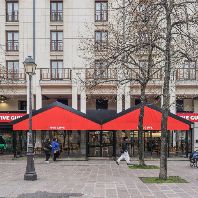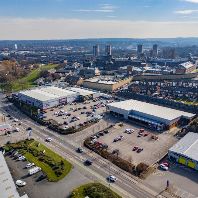Many Czech and Moravian cities are facing a complicated issue: with the rise of shopping centers, many small high street stores are becoming bankrupt and are being replaced, by lower quality retail at best, which results in a continued outflow of consumers from the city center... This phenomenon concerns not only visitors to city centers but also residents. However, according to international consultancy firm DTZ, it is possible to remove the negative link between out of town shopping centers and a city center high street, despite the fact that shopping centers are accommodating retail as well as entertainment facilities and other services, which used to be traditionally placed in city centers.
"One possible solution is the focus on specialty shops. In addition to the increasingly popular markets and the accent on fresh or local food, it means shops that are missing in shopping malls can be present in the city centre including boutique stores, cafes, restaurants etc," says Lenka Hartmanová, analyst at DTZ, who added that what should come first is an urban planning concept, stimulating the return of consumers to the city centers. The strategic planning should include public spaces, quality public transport, cycling routes, parking facilities, greenery, and places where senior citizens or families with young children can enjoy themselves.
One can learn from the example of the United States, where downtown property owners joined together with a common marketing and sales strategy to attract visitors. In cooperation with the authorities they also share in investments, for example in making the street's and sidewalks more attractive. There is also ongoing coordination in the composition and product range of shops. "Municipalities in more mature economies try to judge new development projects with regard to the impact on current supply. That is also why studies and analyses are often ordered to determine the risk," added Lenka Vodráková of DTZ.
Examples of solutions can also be found in Western Europe: after unrestrained construction of hypermarkets and shopping malls on the edges of towns in the 70s and especially in the 80s, municipalities began to gradually regulate construction and promote revitalization of city centre areas, which had suffered a loss of shops and customers to shopping malls. For example, in Great Britain and the Netherlands there are strict rules for construction and projects in city centers are given preference. British cities are developing a strategy of how much and what kind of commercial space their city needs, and also regulate what kinds of use and types of shops should be located in their centers.
"Often it is necessary to get building owners, shop owners and the city to work together, assuming that the city will provide strategic leadership and vision, will set planning limits and invest into public spaces," added Lenka Hartmanová, who is also a member of the Institute for Sustainable Development of Settlements. This route can also include rent reduction for retailers in municipally-owned buildings.
An interesting approach in 2008 was published by the city hall of Prague 6, which wants to help revive the popular Dejvická Street. The coming years should see a new square, tree-lined avenues and underground garages. The aim is to transform this very ordinary street, filled with parked cars of both locals and commuters, into a bustling urban commercial avenue where pedestrians would have the main say.
Source: DTZ














